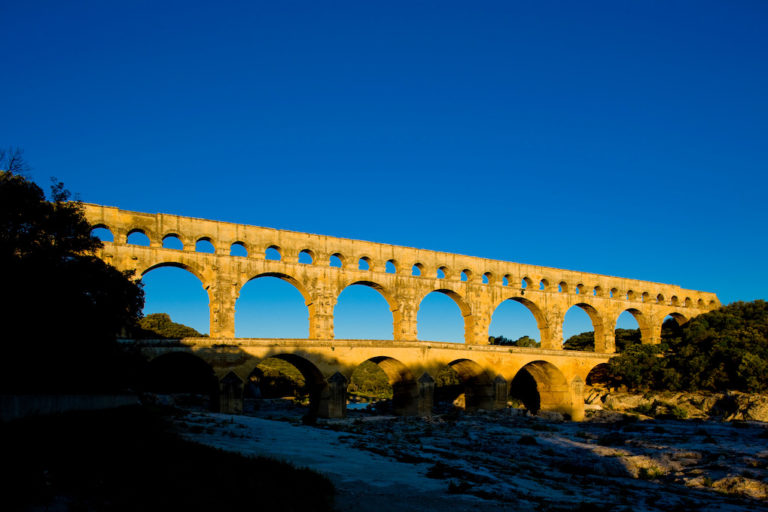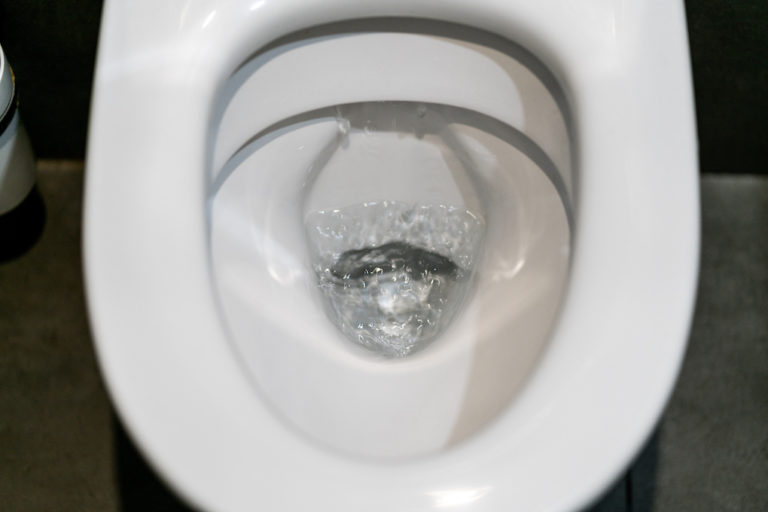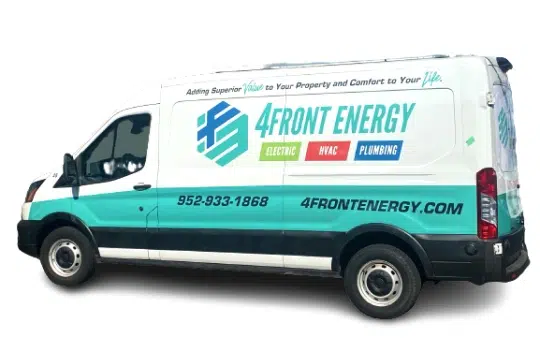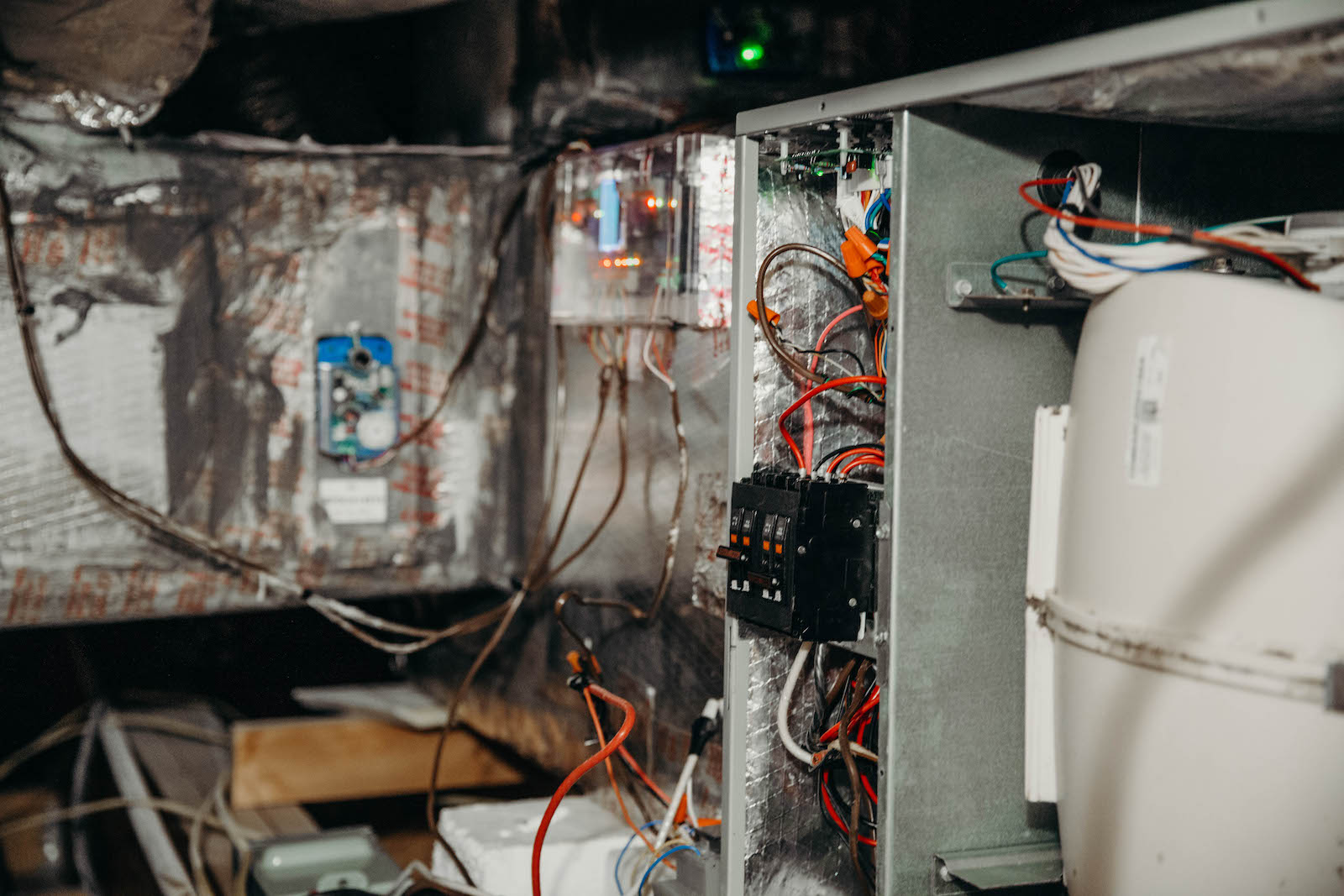A Brief History Of Plumbing: From the World’s First Toilet to Now
You might grip your toilet handle a little tighter today knowing the history of plumbing and how it started (cringe) to where it is today. Despite primitive latrines (toilets) being nearly 5,000 years old, the first flushable toilet wasn’t invented till the late 1500s. And even then it was nothing like what it is today, nor was it widely used. Yikes!
Today’s history lesson will cover everything from the first aqueducts to the first water conservation efforts through better plumbing systems. We hope you find it interesting, and remind you not to take indoor plumbing for granted.
Prehistoric Plumbing: 4,000 BC-500 AD
Some of the earliest plumbing pre-dates even some written language—wow! The oldest known use of sewer pipes dates back to 3500 BC in what is modern-day Pakistan and India. The Indus River Valley Civilization is credited with many innovations such as weight measurements and the production of metals such as bronze and copper.
But their “sewer system” which pulled water from wells to use in homes, even had a drainage system for rainwater and waste. It could very well be the reason why many other civilizations made systems of their own.

Other prehistoric plumbing marvels include:
The First Copper Water Pipes
The first copper water pipe systems in existence were found in a pyramid funerary complex in Egypt which was an intricate plumbing system that even supplied water to the tombs. The ancient Egyptians made great use of the Nile River which could carry water via their copper piping systems to water their crops when the river was high.
Elaborate Plumbing Systems in Greece
An even more elaborate sewer drainage system was discovered on the Greek island of Crete which dates to around 1500 BC and included everything from early bathrooms to manholes. As civilization advanced, so did the desire for private lavatories.
The queen’s quarters were discovered to have a bathtub that could fill and drain water as well as a sectioned-off restroom with a flushing mechanism. The fun thing about the Greek sewer systems was they had used terracotta clay for their pipes, which many can be found today.
Royal Showers
Around 700 BC royalty were known to “shower” by having their servants or a pulley system to pour water over themselves and into a drainage system which was a more luxurious way of bathing.
Plumbing That Inspired Today’s Systems
From around 500 BC to 500 AD, the Roman Empire crafted elaborate plumbing systems that included sinks, showers, toilets, drains, and bathtubs which are said to have been the jumping-off point for all of the plumbing that we have today.
Large Roman-Built Aqueducts
Not only did the Romans build a vast aqueduct system to carry over a billion liters of water nearly 60 miles a day for crops, but the remaining water passing through was dispersed throughout the homes in Rome to be used in sinks, toilets, etc.

Early Steps Towards Modern Plumbing: 1500-1800s
Some great inventions came out of the 1500s: the pocket watch, the water thermometer, bottled beer, and the first flushing toilet. Unfortunately, the toilet couldn’t be credited to a single inventor but was more of an evolution.
The First Flushable Toilets
The first flushable toilets were called “earth closets” and were simply a hole in the ground with a wooden seat that would be covered up when not in use. The waste would fall into a cesspit or septic tank which would have to be emptied on a regular basis. Even though they were better than the previous pit latrines, they were still not very popular because of the smell and mess.
It wasn’t till 1596 when Sir John Harington designed what is called the “Anglo-Dutch” toilet which was more like a modern-day toilet in that it used water to flush the waste away. It was still not very popular because it was expensive to build and required a lot of water, but it did pave the way for future toilets.
In 1775, Alexander Cumming improved upon the design initiated by Sir John Harington and patented the first flushing mechanism. It included the S-trap still used today. By 1800, most homes had some sort of indoor plumbing system even though it was not always up to code. For example, many homes still used lead pipes which were toxic and caused many health problems (including death).

Toilet Paper Is Invented!
It wasn’t even until 1857 that the first commercially available toilet paper came about. Of course, toilet paper took many different forms throughout the last 200 years but it started with the founding of the Scott Paper Company which sold toilet paper on rolls.
1879 brought the first perforated paper, 1880 saw individual squares of toilet paper sold, then finally toilet paper softened up in 1942 with the first two-ply sheets.
Plumbing Marvels of the Last 100 Years: 1900-Today
Even since 1900, plumbing has made some significant leaps and bounds as the last 100 years became more modernized and civilization thrived with inventions and technological advancements.
With so many changes and innovations, eventually, it came time to standardize plumbing for American households. Herbert Hoover, who was the 31st President of the United States, signed the National Standard Plumbing Code in 1927 which regulated plumbing systems and materials used in construction.
In the 1950s, another huge advancement for plumbing happened with the invention of polyvinyl chloride (PVC) pipe. PVC pipes are still being used today because they are cheaper and more stable.
Other great plumbing moments in the last 50 years include:
The first water conservation laws helped cut gallons per flush by half which helped drought-ridden states save water and set into motion more conservation efforts by implementing water-saving techniques across all sorts of fixtures, not just toilets.
The U.S. Energy Policy Act in 1992 furthered conservation efforts by outlawing toilets that flush any more than 1.6 gallons of water per flush.

As you can see, plumbing has come a long way, with most of the plumbing we’re familiar with happening in just the last few decades. Some of your grandparents’ generations may have even still used an outhouse and didn’t have a home with flushing toilets inside. Isn’t that something?
So the next time you go to wash your hands or take a shower or flush the toilet—know that it’s thanks to thousands of years of innovators and inventions that give you the convenient and hygienic practices of today.
And modern plumbing is no good without a good modern plumber. When the time comes for plumbing repairs, call your friends at 4Front Energy. We can tackle any plumbing issue you may have in no time at all.
Request Service

Why Choose 4Front Energy?
We’re a Service Company, Not a Sales Company
- Licensed, bonded & insured contractor
- Trusted Twin Cities service provider for nearly 30 years
- Reliable service excellence
- One number for electric, HVAC, and plumbing
- Stand behind our work with integrity
- Fair and straightforward pricing
- Provide invaluable comfort and integrated efficiency
- Technicians that take pride in their work



